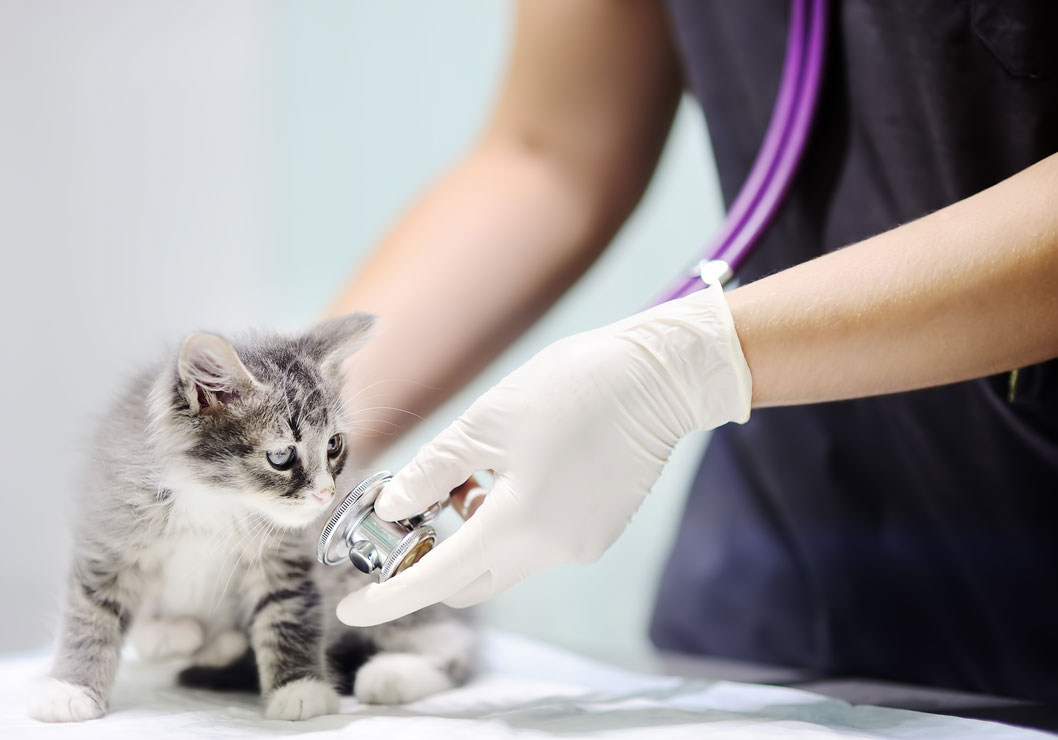Why Annual Exams Are Crucial for Good Cat Health

Many cats dislike getting into a cat carrier, riding in the car, and visiting the veterinarian. That, combined with an idea that indoor cats aren't exposed to as many things that could injure their health as outdoor cats, keeps many people from following through on taking their feline friends in for annual exams. However, there are some excellent reasons owners of indoor-only cats should reframe their thinking on this issue and call for an appointment.
The Exam
When your vet can get his or her hands, eyes, and ears on your cat, the things that can be found are endless and amazing. From mild heart murmurs to tiny lumps or bumps to painful, hidden dental disease to evidence of hypertension visible in the retinas, a vast array of problems can be caught early. In fact, cats are so adept at hiding illness that you often really must look hard to find it, and that's something vets are trained to do.
When an issue is caught early, the course of the illness may be changed significantly. Depending on what it is, it might be resolved through quick treatment. Or the vet might recommend close monitoring to determine if it is worsening. A trip to a specialist might be recommended. More treatment options are available for certain conditions when they're caught early as compared to when they aren't found until the cat is showing signs of the illness.
Remember too that your cat has a shorter lifespan than you do. In effect, that means that she ages faster. So, if you are taking your kitty to the vet once a year, that could be compared to you going to see your doctor every five to eight years. Wow! A lot can change with your health over that kind of time. The same is true for your cat if you go too long between vet visits.
Preventative Medicine and Treatments
There's a reason for the old saying, "An ounce of prevention is worth a pound of cure." It's true. The more illnesses you can prevent, the healthier your kitty will be. And don't make the mistake of thinking that your cat doesn't need vaccines or heartworm and flea preventative because she stays inside. You, your guests, and even your dog can carry parasites and viruses into the home. Cats can be exposed to outdoor cats through screens. Rodents and bats can get into the house. And mosquitoes can get in too. Ask your veterinarian which preventative vaccines and medications your cat needs based on her lifestyle and your geographic area.
Lab Tests Reveal Problems Earlier
Another thing, along with the exam, that can catch problems with your cat early is routine lab testing. A fecal exam to look for intestinal parasites, a urinalysis to scan for evidence of infection, diabetes, or kidney disease, and blood work to check organ function and blood cell health are all invaluable tests for catching things early. In fact, when some of those tests are done routinely and compared with the previous year's results, things can be detected even earlier. One example is the case of kidney disease. A veterinarian may notice that kidney function levels are increasing over time and act to support the kidneys before the levels even make it into the elevated zone. But if there's nothing to compare to, intervention won't happen until the levels are actually high or the cat is showing signs. By then, 75% of kidney function is gone.
Question and Answer Time
Your veterinarian and his or her staff have a wealth of cat care knowledge and visiting them routinely, armed with any questions you have, means you get to benefit from that. Ask questions about your cat's weight, diet, behavior, and health each time you visit. If there's home care like tooth brushing or claw trimming that you aren't comfortable with performing yourself, ask them to demonstrate and help you learn how to do it.
It's great if you can write your questions down before you go in because it's easy to forget them once you're in the thick of the exam. Some things you'll wish to ask every time you go include:
- How is my cat's weight?
- What life stage diet should I be feeding my cat right now?
- Do you see any maintenance care that I'm missing?
Don't be afraid to ask your vet anything. They have heard every question possible, and they don't make any judgments on you for what you don't know. They want to be a partner with you to get your cat the best possible quality of life.
But What About the Car Ride?
Now that you know why your cat needs to see the vet at least yearly, you might still be wondering how to handle the mechanics of it. Many cats aren't thrilled about getting into a cat carrier and taking a car ride.
First, know that you do need to have your cat in a carrier for car travel. If you don't, the chance of escape or an accident is just too high. Also, when you take your cat into the clinic, being loose makes it more likely that she could be scared or injured by other animals in the waiting room.
You can get your cat used to the carrier over time. First, put it in a common area of your home and leave the door open. Place a cozy blanket inside. Your cat might curl up in it and use it as a bed. If so, after a week or so, close the door for short periods and then open it again. Once your cat is used to that, practice closing the door and then carrying the box around the house a little before opening the door again. Slowly work your way up to taking your cat for a short car ride.
If your cat doesn't go in the carrier on her own when you leave it in the living room, try putting a treat in there or even feeding her some meals in it until she's more comfortable.
If you need to put your cat in a carrier to take her to the vet before she's gotten accustomed to the carrier, it helps to set the box on its end, with the open door facing up, and gently lower your cat in rear end first.



